Anyone considering doing business or traveling to Vietnam must come into the country with some background on what Vietnam has been through, especially if you are American or French.
Vietnam has a history of foreign dominations that treated the Vietnamese people brutally. Many times, the North and South of Vietnam have also been divided. Most Vietnamese will tell you they were 1,000 years under Chinese rule and about 99 years under French rule. When you understand Vietnamese history, you can also understand why colonial freedom and national pride are essential to the Vietnamese people. The Vietnamese fought for this national pride and quest for freedom for thousands of years. Vietnam has a long and rich history dating back to the 3rd Century BC.
Table of Contents
- Essential Insights into Vietnam’s Past: Key Historical Context for Travelers
- Vietnam’s 1,000 Years Of Chinese Domination
- Vietnam’s Short-lived Chinese Independence.
- China Returns To Rule Vietnam (again)
- Vietnam’s Independence – Lam Song Uprising
- In 1516, The First Europeans Arrived In Vietnam
- Rebellions in Vietnam – Nguyen Dynasty Was Created, And Vietnam Is United Again.
- The Nguyen Vietnamese Era Of Rule
- The French Era And Vietnam
- Frequently Asked Questions
- Related Content
Essential Insights into Vietnam’s Past: Key Historical Context for Travelers
Introduction Rewrite: “Vietnam’s past is marked by periods of foreign occupation and internal divisions, deeply shaping its culture and national identity. The country’s narrative includes over a millennium of Chinese influence and nearly a century under French colonial rule. Understanding this complex history is crucial to appreciating Vietnam’s strong emphasis on colonial independence and national pride. The Vietnamese people’s enduring struggle for autonomy and identity has roots that stretch back to as early as the 3rd Century BC, forming a backdrop that enriches any visit to this nation.”
Vietnam’s 1,000 Years Of Chinese Domination
The Chinese conquered the Red River Delta, now part of North Vietnam, in the 2nd Century B.C. Many Chinese settlers, officials, and scholars moved to the Red River Delta during this period. Of course, the Vietnamese were not happy about this Chinese domination.
A famous rebellion in AD 40 was led by some Trung sisters (Hai Ba Trung). There is an area of Hanoi and some streets in Hanoi named Hai Ba Trung after these sisters. The Trung sisters raised an army and revolted against Chinese rule.
The sisters then declared themselves the leaders of Vietnam. But in AD 43, the Chinese counterattacked and won back Vietnam. The Sisters threw themselves into the Red River rather than live under Chinese rule.
The Chinese continued to rule Vietnam for many years after that. This Chinese treatment of the Vietnamese included forced labor and other acts of tyranny. There were some continued rebellions, but none of them were able to get Vietnam back into the hands of the Vietnamese people.
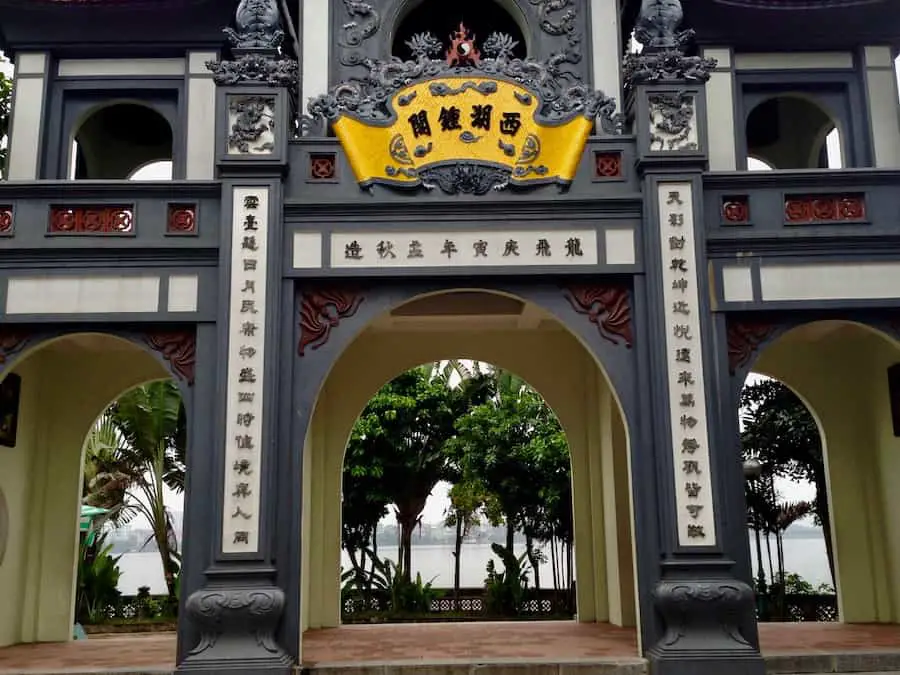
Because China controlled Vietnam for so many years, you will see many older Temples and pagodas with Chinese characters on them when you visit North Vietnam. Though China and Vietnam have shared a close history, they have had a tumultuous history.
In recent years, Vietnamese have protested against Chinese factories and even protested outside the Chinese embassy in Hanoi. Many Vietnamese do not like Chinese. And often, the border and trade between China and Vietnam will be closed for no apparent reason.
Vietnam’s Short-lived Chinese Independence.
The Tang Dynasty in China collapsed in the 10th Century. In 938 AD, a Vietnamese patriot, Ngo Quyen, led a Vietnamese revolt against the Chinese and won back control of Vietnam. From the 10th to the 15th centuries, Vietnam was no longer under the control of China.
China Returns To Rule Vietnam (again)
This independence was short-lived, as the Chinese and Vietnamese continued to fight over Vietnamese territory until the Chinese gained control of Vietnam again in the 15th Century. During this time, the Chinese carted off many of Vietnam’s archives and intellectuals to China. The pilferage significantly affected Vietnam’s history, culture, and civilization.
Vietnam’s Independence – Lam Song Uprising
In 1418, Le Loi, a wealthy philanthropist, led a revolt against the Chinese and won. Le Loi then declared himself emperor Le Thai of Vietnam.
The Le family became the emperors of Vietnam. As part of Le’s family rule, they conquered the Cham lands to the South and parts to the east. Interestingly, they forced the people in these lands to kowtow to them, just as the Chinese had forced the Vietnamese into complete obedience to the Chinese.
In 1516, The First Europeans Arrived In Vietnam
The first Portuguese sailors arrived in Vietnam in 1516. Soon after the arrival of the Portuguese, Dominican missionaries arrived in Vietnam and started to preach Catholicism to the Vietnamese. They had a lot of success in Vietnam, almost as much as in the Philippines.
Today, when you travel through Vietnam, you can still see a lot of Catholic churches dotting the countryside. There are entire Catholic villages, and it is expected to go past a Catholic church in the early weekday morning and find it full of worshippers.
However, the 17th and 18th centuries were like an eerie foreshadowing of what would become of Vietnam in the 20th century. During this period, Vietnam was divided into North and South Vietnam.
The South had the powerful Nguyen Lords, who carried on like an independent Vietnam, though they still claimed to feign allegiance to the Trinh King who ruled the North. War eventually broke out, and the South, with armaments provided by the Dutch, could overpower the North with only subpar Portuguese artillery.

Rebellions in Vietnam – Nguyen Dynasty Was Created, And Vietnam Is United Again.
Peace in Vietnam was short-lived. In 1765, a rebellion started in Tay Son, near the coastal town of Quy Nhon in Central Vietnam. The Nguyen brothers led this rebellion, and they were part of the Tay Son Rebels group.
These Nguyen brothers controlled all of Central Vietnam in less than a decade. Then in 1783, they captured Saigon and the rest of South Vietnam from the Nguyen Lords. One of the Nguyen brothers became the King of the South and another King of the Central part of Vietnam.
Eventually, Nguyen overthrew the Trinh Lords of the North, and the 3rd brother, Nguyen Hue, made himself the Emperor of North Vietnam. He then set out to eliminate the Chinese who were still in some parts of Vietnam. In 1789, Nguyen Hue’s forces defeated the Chinese army and finally drove the Chinese out of Vietnam. This defeat of the Chinese is still considered a great victory for Vietnam.
The Nguyen set to unify Vietnam, and by 1802, Nguyen Anh unified all of Vietnam. Nguyen Anh proclaimed himself Emperor Gia Long and designated Hue as the capital city of Vietnam.
The Nguyen Vietnamese Era Of Rule
The reign of the Nguyens was very precarious. Emperor Gia Long worked to restore some order in Vietnam while strengthening his rule over the country.
Gia Long’s son, Emperor Minh Mang, was extremely anti-Catholic as he saw Catholicism as a threat to the Confucian traditions and his family’s dynasty. He also saw Catholicism and Western influences threatening Vietnamese Confucian traditions and culture.
But in the end, this Nguyen Dynasty was unlike the Chinese they had fought against. They had an expansionist mentality as they expanded and conquered other places, such as present-day Cambodia and parts of present-day Lao. They even had some clashes with Thailand. Their goal was to pick apart the Khmer empire and be the strength in this part of the world.
The French Era And Vietnam
The French first came to Vietnam in 1847, attacking Danang Harbor. The reason why they attacked Vietnam was that the present Emperor Thieu Tri was suppressing the Catholic missionaries.
Emperor Thieu Tri was determined to rid Vietnam of all Roman Catholic Missionaries. So, the French first seized Danang; in 1859, they marched on to Saigon. By 1862, Emperor Tu Duc signed a treaty that gave the French what was then known as Conchinchina. This did not yet include North Vietnam, but all that would soon change.
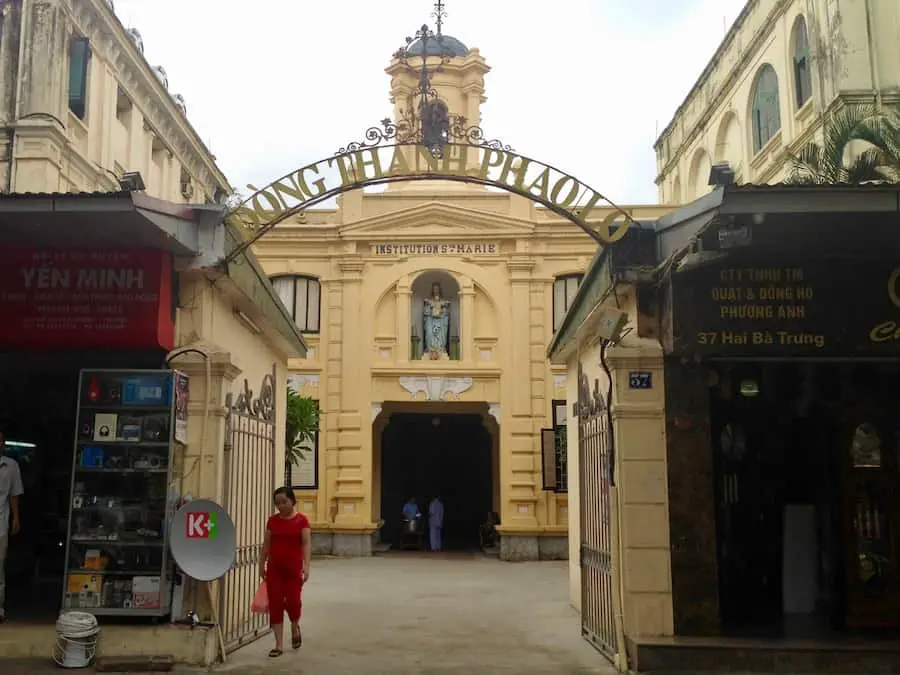
In 1872, French merchant Jean Dupuis sought to trade salt to a Yunnanese General in China via the Red River. He brought in an army and seized the Hanoi Citadel.
The French brought in Captain Francis Garnier to keep Jean Dupuis and his army in check for the North Vietnam military campaign. But instead of keeping Jean Dupuis and his army in check, Captain Garnier took over where Jean Dupuis had left off and continued the conquest of North Vietnam.
Many historians felt that the French did not have a clear plan for controlling and ruling Vietnam and the empire of Cochinchina. If the French had looked closely at Vietnam’s historical past, one thing that stands out is the Vietnamese have a long history of being conquered, rebelling against gaining their freedom, only to be conquered again. During the entire French rule of Vietnam, there were always pockets of resistance to French rule throughout Vietnam.
The French had ambitious plans for Vietnam. Under French rule, they carried out a lot of public work projects, such as the Saigon – Hanoi railway system. But these public works projects also needed money.
The French taxed the Vietnamese peasants heavily to help fund these public work activities and all their general work projects. This heavy taxation started to devastate the local economy.
You can read a blog about the Round Basket Boats of Vietnam, and how round basket boats along the coastline of Vietnam were invented to circumvent a tax the French had placed on the anglers and their boats. These boats are an example of how the Vietnamese found a way to work around the rule of the French and their policies.
The French colonial rule of Vietnam can best be described as brutal and racist. They treated the Vietnamese as second-class citizens in their own country and were notorious for their brutality.
Hanoi Prison Museum
In Hanoi, you can visit the Hanoi Prison Museum, which many Americans know as the famous Hanoi Hilton Prison, where American soldiers were imprisoned during the American-Vietnam War. Today, part of the prison is a museum. Most of the prison museum is about how the French treated the Vietnamese. The torturing techniques used on American soldiers were taught to the Vietnamese by the French, who used those same techniques on the Vietnamese rebels.
Opium and prostitution were also rampant during the French rule in Vietnam. Vietnamese were very poor and paid extremely, very poorly. Many were slaves or indentured servants.
Vietnamese workers were at the mercy of the French rulers. For example, the Michelin Tire factory in South Vietnam was notorious for treating its Vietnamese workers poorly. As Ngo Vinh Linh wrote about these deplorable working and living conditions when he said:
“Rubber, the second largest Vietnamese export after rice, was produced by virtually indentured workers so blighted by malaria, dysentery and malnutrition that at one Michelin company plantation, twelve thousand out of forty-five thousand workers died between 1917 and 1944.”
The Michelin File: Drive to empire
When you start to view the history of Vietnam from the eyes of the ordinary Vietnamese who were forced to work and live in such terrible conditions, you can understand why they fought the French and wanted to have independence once and for all.
During the era of French rule, Ho Chi Minh, seeing the plight of the ordinary Vietnamese, formed the Viet Minh fighting rebels as a resistance force to the French occupation of Vietnam. This part of history can get very long and complicated, but many scholars believe that Ho Chi Minh was first and foremost a Nationalist at the time.
Ho Chi Minh wanted Vietnam to be a free and independent country. He even approached the United States to help Vietnam become free, but America refused him as they said the French were America’s allies.
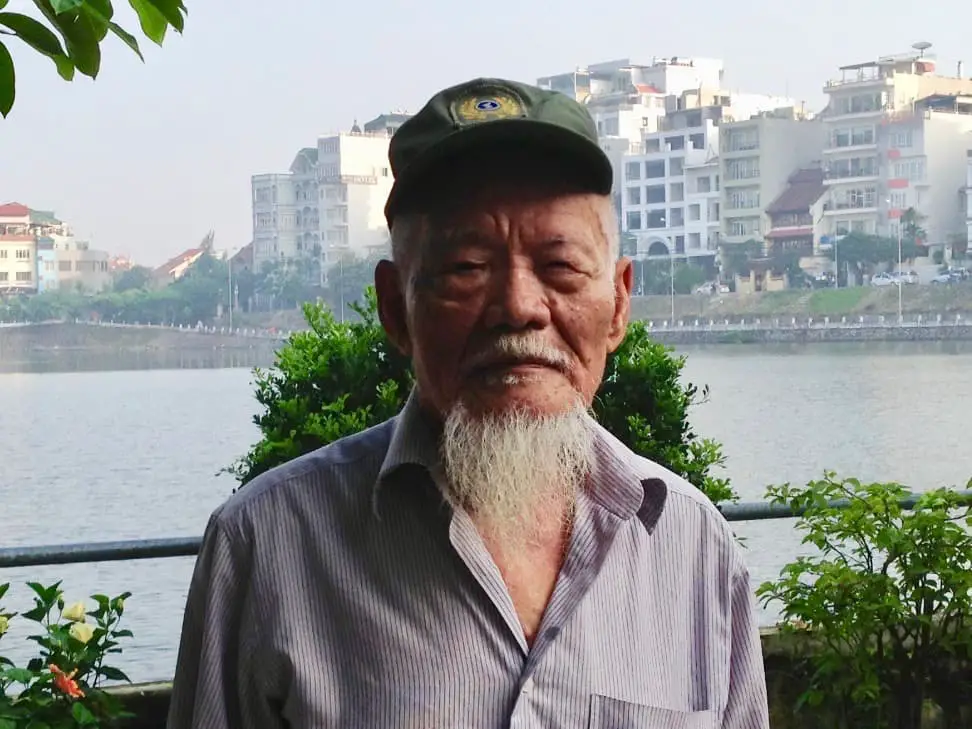
World War II And Vietnam
France fell to Germany during World War II, so the French government in Vietnam was crippled. This allowed the Japanese troops to enter Vietnam due to their expansion throughout Southeast Asia.
The Japanese did allow the French to continue to run Vietnam on a day-to-day basis. So, during World War II, everything pretty much stayed the same – except this time, the Vietnamese were under brutal Japanese control.
As World War II drew to a close, the Japanese started stealing rice and keeping it in their storehouses to send the rice to people starving in Japan. This pilfering of the rice, combined with some floods and dikes overflowing in Vietnam, caused giant rice and food storage in Vietnam. Over 10 million Vietnamese people starved to death under this Japanese occupation.
People were dying by the minute due to starvation. Dead bodies were daily being picked off the streets. Ho Chi Minh, seeing the plight of the ordinary Vietnamese and the starvation of the Vietnamese people, ordered his group of Viet Minh rebels to attack the rice storehouses of the Japanese and then distribute the rice to the starving Vietnamese population. This act of helping save and help his people first undoubtedly helped endear the Vietnamese people to Ho Chi Minh and the Viet Minh rebels.
During World War II, most of the Vietnamese realized that the French, as an occupying force, could not protect them as they could not even protect Vietnam against the occupation by the Japanese army.
The only real military force was Ho Chi Minh and his band of rebels, the Viet Minh. America, realizing this at the time and as Japan was our enemy, was also helping to arm and train the Viet Minh to fight against the Japanese occupation of Vietnam.
A perfect book on Amazon is called Hanoi Adieu by Mandaley Perkins. This book is the memoir of a Frenchman who lived in Vietnam during the French Indochine period. He served in the French Military during this period. It gives a fascinating perspective on Vietnam and the French Colonial rule from the eyes of a Frenchman.
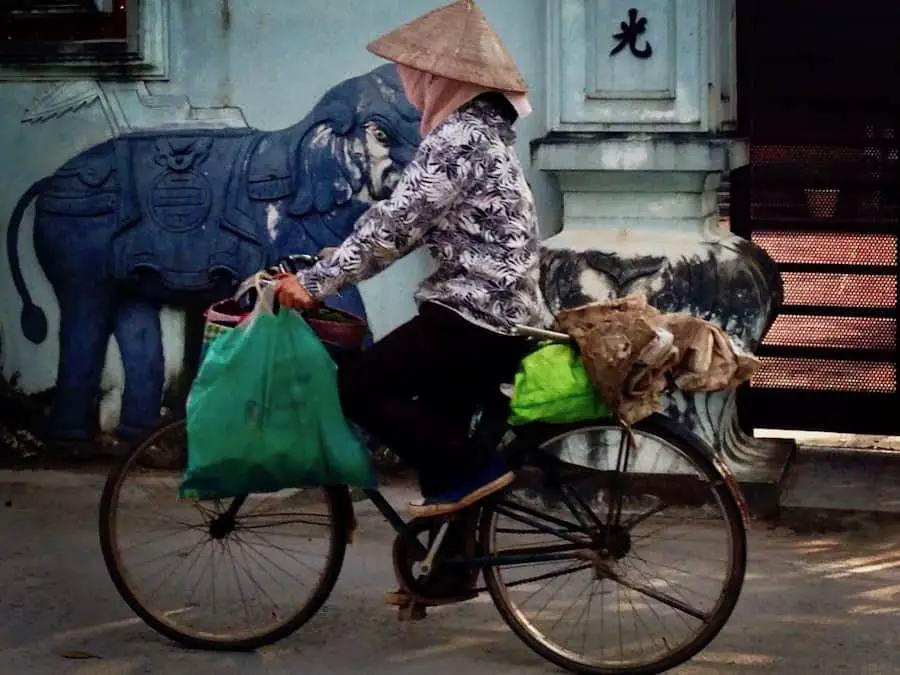
Vietnam’s Messy Aftermath After World War II
When World War II ended, Ho Chi Minh and his Viet Minh rebels controlled large sections of Vietnam, particularly in North Vietnam. Ho Chi Minh formed the National Liberation Committee and, during this time, called for the August Revolution, which was a general uprising. They wanted to take advantage of the power vacuum left in Vietnam after World War II.
In Central Vietnam, Bao Dai, who controlled the Central part, abdicated in favor of a very shaky coalition. In September 1945, Ho Chi Minh declared Vietnam’s independence.
Interestingly, Ho Chi Minh wrote many letters to US President Truman asking for help and assistance for Vietnam to become independent. Ho Chi Minh received no replies. He believed in America and that America would help the Vietnamese to get independence from French colonial rule.
But after World War II, things started to get messy for Vietnam. In an agreement after World War II, Vietnam was once again divided. The North was controlled by the Chinese Nationalists, also known as the Kunmingdong, and the South by the British.
To add to this, many Chinese nationalist soldiers and Chinese peasants came to North Vietnam after their defeat in Communist China and started to loot Hanoi. The British also struggled in the South and eventually pulled out. Eventually, the French gained control of Vietnam again.
The Vietnamese Resistance And The French Rule
Ho Chi Minh did not want to have the French, British, or Chinese Nationalists or any other foreign group or power in Vietnam. During this period, as the Americans had trained and helped his army eliminate the Japanese, they built upon that to fight the other foreign forces in Vietnam.
Communist China and Russia agreed to help Ho Chi Minh and his Viet Minh rebels. Though Ho Chi Minh believed in Communism as the Communists were anti-foreign colonization, he was also criticized by the Communists. They felt Ho Chi Minh was not a true communist as he was a true Vietnamese nationalist.
Whatever Ho Chi Minh’s personal beliefs were, what was clear was that he wanted independence for Vietnam. Ho Chi Minh said:
“Our resistance will be long and painful, but whatever the sacrifices, however long the struggle, we shall fight to the end, until Vietnam is fully independent and reunified.”
Ho Chi minh
After World War 2, the Viet Minh and the French War intensified. At this point, America also stepped in to offer monetary support to the French. The French were suffering to rebuild France after World War II, and now they were fighting in this colonial backwater in Southeast Asia.
The battle to end French rule happened in an area known as Dien Bien Phu, an outpost on the border of Lao and Vietnam. The French had superior firepower and arming power, so they were confident they would win this battle.
Little did they know that General Giap, the history teacher at the French High School in Vietnam, had men, women, and children camouflage themselves with trees and branches as they carried arms and other things in the hills surrounding the Dien Bien Phu area.
General Giap said the French were at the bottom of this valley called a rice bowl. The Viet Minh had the upper hand on the mountains, looking and shooting down at the French. The Viet Minh rebels surrounded the French with no way out. At some point, the French and even the Americans had to airlift in food and other supplies just so the French soldiers could survive.
The Dien Bien Phu battle saw 20,000 French soldiers fighting against 49,500 Viet Minh fighters. The French confidence in their so-called superior military firepower was no use. For almost two months, this battle raged on until finally, the French had no choice but to surrender.
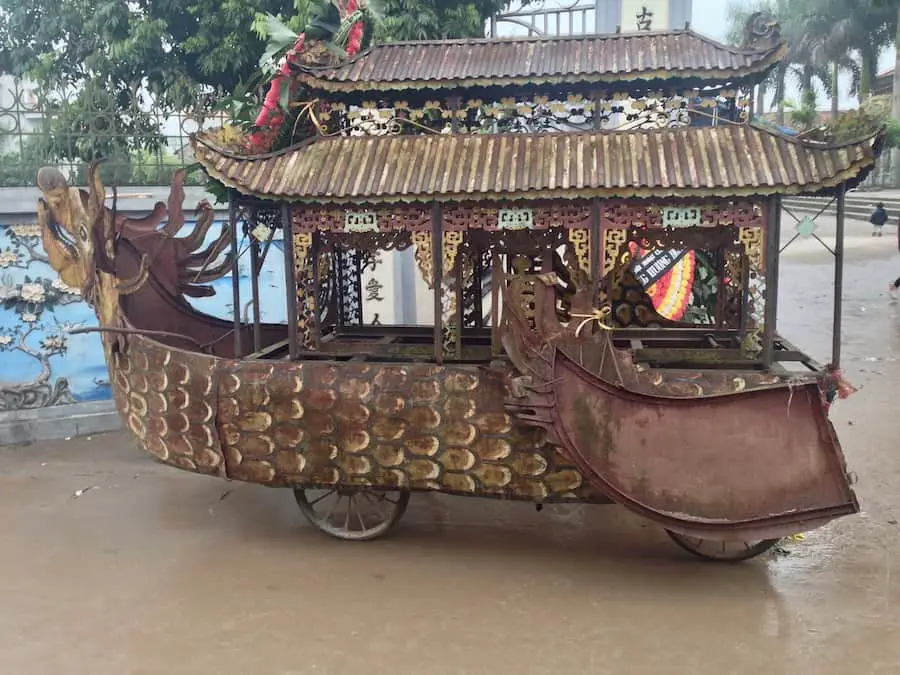
Vietnam And The 1954 Geneva Accords
After the brutal defeat of the French at Dien Bien Phu, the French withdrew from Vietnam. The Viet Minh had won back at least the northern part of Vietnam.
In the 1954 Geneva Accords, it was decided that the northern part of Vietnam would be provisionally divided between North and South Vietnam, with elections to be held quickly to unite the North and South of Vietnam into one country.
It was widely acknowledged that the clear winner of these elections would have been Ho Chi Minh. Even US President Dwight D. Eisenhower, in his autobiography, said:
“I have never talked or corresponded with a person knowledgeable in Indochinese affairs who did not agree that had elections been held as of the time of the fighting, possibly 80 per cent of the population would have voted for the Communist Ho Chi Minh as their leader rather than Chief of State Bao Dai. “
U.S. :Pres Dwight D Eisenhower
But as those elections never took place, you can see how Ho Chi Minh and the Viet Minh felt cheated out of their freedom and the 1954 Geneva Accords. The elections were supposed to unify Vietnam, but they never took place.
Also, during this period, America decided to help prop up the government of South Vietnam and started sending in American advisors. The government of South Vietnam was weak, corrupt, and incapable of governing South Vietnam.
President Eisenhower and many in the U.S. believed in the domino theory, in that if we did not stop Communism now, the entire world would become communist. This domino theory helped ensure the American fight against Communism and the continued support of the puppet and weak government of South Vietnam.

In 1959, the first American life was lost in Vietnam. By 1961, President John F Kennedy, now the U.S. President, decided to send helicopters and 400 Green Berets to South Vietnam to help the South Vietnamese fight against the North Vietnamese. The U.S. also started to spray the famous Agent Orange to kill the foliage and vegetation throughout Vietnam.
American War (Vietnam War)
America’s decision to go into Vietnam started in secret and ended with the world watching as America was forced to leave. This war was one of the most devised wars in America’s history. It was a war that most Americans now agree was based on false information and that America stayed in even long after they realized they could never win the war.
The Vietnamese do not call this war the Vietnam War, as we call it in America. They call it the American War.
The first time I heard them call it the American War, I was set back a bit and felt my feathers ruffled. I am American, and I always thought of this war like the Vietnam War, not the American War. As long as Americans called it the Vietnam War, we did not seem responsible. But you see, in the eyes of the Vietnamese, we do hold responsibility for the war as we came on their soil to fight them for their land.
It was Ho Chi Minh who famously said:
“Everything depends on the Americans. If they want to make war for 20 years then we shall make war for 20 years. If they want to make peace, we shall make peace and invite them to tea afterwards.”
Ho chi minh
If you are going to do business or travel in Vietnam, you must understand Vietnam and the war between America and Vietnam – because this war, in many ways, has shaped the lives of those Vietnamese you will meet.
Timeline And Highlights Of The Vietnam War
The Vietnam War was quite a complicated war. It is one of the longest wars America ever fought as it lasted 17 years and 4 months. Though Americans were in Vietnam long before 1964, it was in 1964 that Congress passed the Gulf of Tonkin Resolution, which allowed the US President to take any action necessary in the armed conflict or Vietnam war.
Here are some highlights of the war and each period of the war.
The Official Start of the War (1964 – 1968) Highlights
- US Maddox is attacked in the Gulf of Tonkin. This is later disputed, but this explains why America entered the war.
- Gulf of Tonkin Resolution was passed in August 1964, giving President Johnson full power to take any necessary action.
- Pres Johnson ordered the bombing of North Vietnam in Operation Rolling Thunder. (The Operation Rolling Thunder took place from 1965 to 1968).
- About this time (1965), US Marines landed on the beaches of Danang, Vietnam.
- In July of 1965, President Johnson called for 50,000 more ground troops to be sent to Vietnam. This increases the number of drafts in the United States to 35,000 each month.
- In the Battle of la Drang Valley, nearly 300 Americans are killed.
- By 1966 there were now 400,000 American Troops in Vietnam, increasing to 500,000 in 1967.
- In 1968 a US Marine Garrison in Khe Sanh, South Vietnam, takes on massive artillery fire. This standoff lasts for 77 days.
- In early 1968, the North Vietnamese began the TET Offensive and attacked over 100 cities, military posts, and other places in South Vietnam. This also includes attacks in Hue and Saigon, including the invasion of the US Embassy in Saigon. This TET Offensive is considered the turning point of the war in favor of North Vietnam.
- Also, in 1968, there was a massacre of Mai Lai where American forces killed more than 500 Vietnamese Civilians.
- Due to the backlash of his handling of the War, President Lyndon B Johnson decided not to run for re-election, and President Richard Nixon became the next US President.
The American withdrawal from Vietnam 1969-1972
- Ho Chi Minh died of a heart attack in September 1969. This ends his era of leadership.
- In 1969, the US instituted the first draft lottery since World War II, so many “draft dodgers” fled to Canada.
- The Nixon Administration started to reduce the number of U.S. Forces in South Vietnam. The number went from 549,000 in 1969 to 69,000 in 1972.
- In June 1970, Congress repealed the Gulf of Tonkin Resolution and asserted control over the president’s ability to use “any force necessary.”
- In 1971, the New York Times they published an article about the Pentagon Papers, which documents that the U.S. Government was secretly increasing US involvement in the war.
- From March to October 1972, The North Vietnamese launched attacks known as the Easter Attacks, and they gained more Southern Vietnamese territory.
- In December 1972, President Nixon ordered the Operation Linebacker attack. For this attack, roughly 20,000 tons of bombs were dispersed over the densely populated areas between Hanoi and Haiphong.
The End of the War is Insight (1972 – 1975)
- In 1973, the draft ended in favor of an all-volunteer military.
- In January 1973, President Nixon signed the Paris Peace Accord, ending U.S. involvement in the Vietnam War. North Vietnam agreed to end the war. As the US troops departed, the North Vietnamese continued to fight to retake South Vietnam.
- From February to April 1973, the North Vietnamese released 591 Americans held in Hanoi at the famous Hanoi prison known as the Hanoi Hilton.
- In August 1974, President Nixon resigned from the US Presidency, and President Gerald Ford became President. President Gerald Ford refused to send any more U.S. Troops to Vietnam.
- In April 1975, the North Vietnamese forces seized Saigon. The government of South Vietnam surrendered power, and the US Marine and Air Forces transported Vietnam in 18 hours, 1,000 American Civilians and 7,000 South Vietnamese.
- In July 1975, North and South Vietnam were formally united into the Socialist Republic of Vietnam.
When this war finally ended the calculation of the casualities were:
The history Channel
– Over 58,000 American’s lost their lives
– At least 1.1 million North Vietnamese fighters died.
– Over 250,000 South Vietnamese soliders died.
– More than 2 million Vietnamese civilians died.
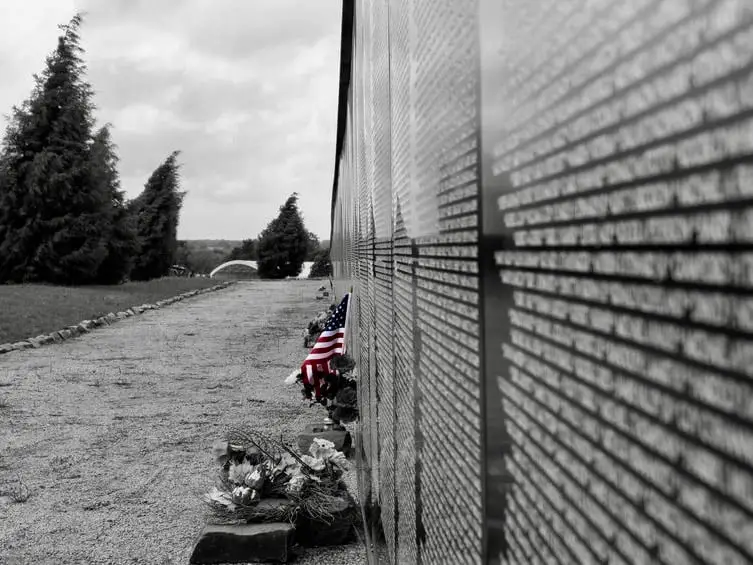
If you would like to learn more about Vietnam’s history from the Vietnam War to the present day, you can read part two of this series called Vietnam After the War, What You Need to Know.
Anyone looking to do business or travel to Vietnam should understand the history of Vietnam. Understanding this history will help you understand Vietnam and why being Vietnamese is essential to this country and culture.
“History is who we are and why we are the way we are.”
David Mc Cullough
As an American, my feelings for Vietnam are partly based on Americans’ history. America considered the Vietnamese our enemies for so many years as so many American lives were lost or destroyed fighting on this soil. But as I study the history of Vietnam, I understand more about why the Vietnamese fought so hard for their independence.
As I look at the history of Vietnam, I also learn a great lesson about forgiveness. In all my years living and traveling around Vietnam, I have never been mistreated and unkind because I am American. I now understand the power of one nation to forgive another and move on. And that is what Vietnam has done by opening its doors to business and foreign travel. Those foreigners who come here should never forget the amount of forgiveness the Vietnamese people have had.
Find out more about how Mondoro can help you create, develop, and manufacture excellent home decor and furniture products – don’t hesitate to contact me, Anita. Check out my email by clicking here or become a part of our community and join our newsletter by clicking here.
Mondoro gives out a FREE Lookbook to anyone interested. You can receive a copy of our latest Lookbook by clicking here.
Listen to our Podcast called Global Trade Gal. You can find it on all major podcast platforms. Try out listening to one of our podcasts by clicking here.
Subscribe to our Mondoro Company Limited YouTube Channel with great videos and information by clicking here.
Frequently Asked Questions
How much did the Vietnam war cost American Taxpayers?
The Vietnam War cost US Taxpayers just over $168,000,000,000 or 168 billion dollars. That would be over 1,500,000,000,000 or 1.5 trillion dollars in today’s dollars. It was a costly war for America and American taxpayers.
When did America and Vietnam normalize diplomatic relations?
After 20 years of severed ties, the United States and Vietnam normalized relations on July 11, 1995. This happened when the U.S. President was President Bill Clinton. Since that time, the US has normalized diplomatic relations with Vietnam.
When did Vietnam become an independent country?
Vietnam declared its independence from French colonial rule on September 2, 1945, with Ho Chi Minh’s establishment of the Democratic Republic of Vietnam. However, it wasn’t until the Geneva Accords of 1954 that Vietnam’s independence was recognized, leading to the temporary division of the country into North and South Vietnam.
What was the Vietnam War about?
The Vietnam War (1955-1975) was primarily a conflict between the communist government of North Vietnam and its allies, including the Viet Cong in South Vietnam, and the government of South Vietnam, supported by the United States and other anti-communist nations. It was part of the broader context of the Cold War and was fundamentally about the struggle between communism and anti-communism.
How long did Chinese rule last in Vietnam?
Chinese rule in Vietnam lasted for over a millennium, beginning in 111 BC when the Han Dynasty annexed the region and continuing, with various interruptions, until the 10th century AD.
What were the main dynasties that ruled Vietnam?
Notable Vietnamese dynasties include the Ly Dynasty (1009–1225), the Tran Dynasty (1225–1400), the Le Dynasty (1428–1788), and the Nguyen Dynasty (1802–1945), the last ruling dynasty of Vietnam.
When was the French colonial period in Vietnam?
The French colonial period in Vietnam lasted from the mid-19th century until 1954. It began with the French conquest in the 1850s and ended with the Geneva Accords following the First Indochina War.
What was the Tet Offensive?
The Tet Offensive was a major military campaign during the Vietnam War, launched on January 30, 1968, by forces of the Viet Cong and the North Vietnamese Army against South Vietnam, the United States, and their allies. It was a turning point in the war, leading to significant changes in American public opinion.
How did Vietnam reunify?
Vietnam was reunified on April 30, 1975, when North Vietnamese forces captured Saigon, the capital of South Vietnam. This event marked the end of the Vietnam War and led to the establishment of the Socialist Republic of Vietnam.
What was the “Đổi Mới” reform in Vietnam?
“Đổi Mới” refers to the economic reforms initiated in 1986, aimed at transitioning Vietnam from a centrally-planned economy to a “socialist-oriented market economy.” These reforms led to significant economic growth and development in Vietnam.
What is the significance of the Ho Chi Minh Trail?
The Ho Chi Minh Trail was a network of paths and roads used by North Vietnam to transport troops, weapons, and supplies to support the Viet Cong in South Vietnam during the Vietnam War. It played a crucial role in the logistics of the war.
What impact did the First Indochina War have on Vietnam?
The First Indochina War (1946-1954) between the Viet Minh and the French colonial forces led to the end of French rule in Indochina and set the stage for the division of Vietnam into North and South, eventually leading to the Vietnam War.
Related Content
Home Decor And Furniture Designs For The Perfect Entrance Hallway
Furniture, decorative mirrors, wall art, lamps, lighting, and home decor accessories are all great items in your entrance hallway. The hallway entrance space can help set the mood for your entire home, so it is a crucial design space to consider whenever you are decorating your home.
You can discover more by reading Home Decor and Furniture Designs For The Perfect Entrance Hallway by clicking here.
What Is Home Decoration? And How Are Items Manufactured
What exactly does home decoration entail? How is it distinct from other forms of decoration, such as commercial or event decoration? Read on as we delve deep into the home decoration world, breaking down its essential components, significance, and manufacturing nuances.
Click this link to learn about What Is Home Decoration? And How Are Items Manufactured.
Why Do Handmade Home Decor Products Have A Soul?
We live in a world where so much of what we have is mass-produced by machines, yet there is something uniquely special about handmade products – especially handmade home decor products. Like Thom Filica pointed out, I also believe homemade products have a soul.
You can discover more by reading Why Do Handmade Home Decor Products Have A Soul? by clicking here.


